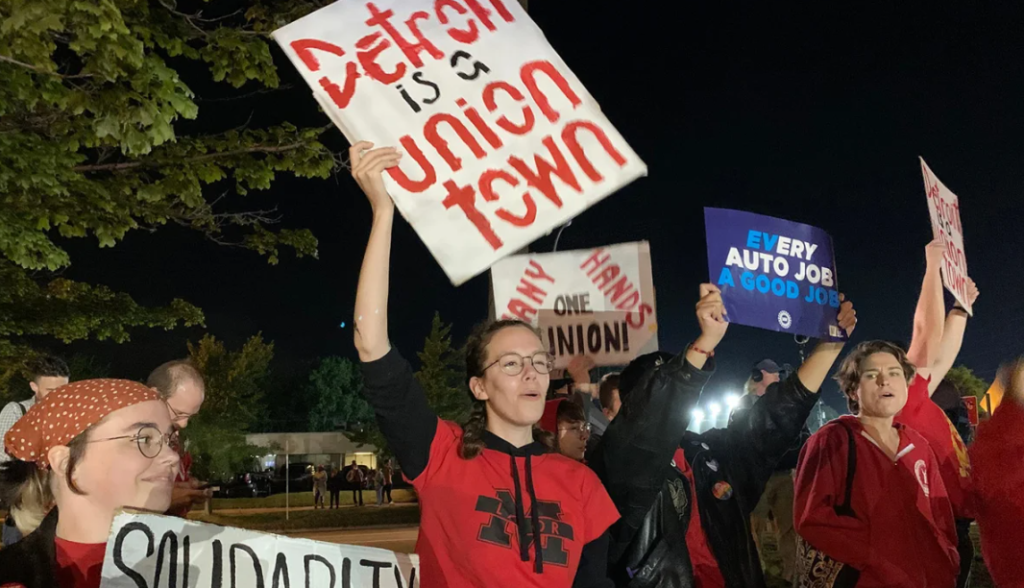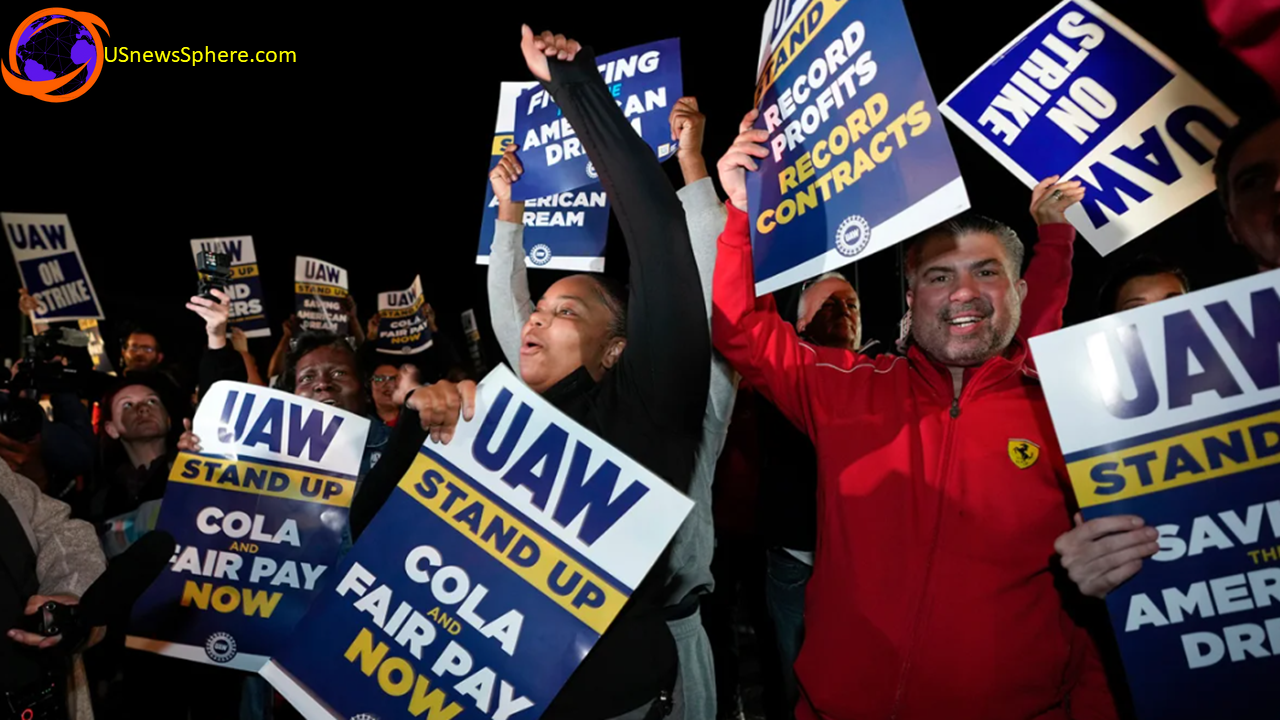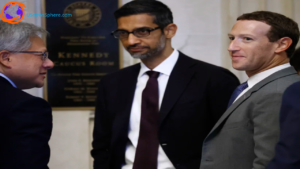The Stand Up UAW Strike The United Auto Workers union has initiated a remarkable move by launching strikes against America’s major unionized automakers: General Motors, Ford, and Stellantis. Labelled as the “Stand Up Strike,” the UAW introduces this as a strategic change in their approach to protests, targeting three plants in Missouri, Michigan, and Ohio.
UAW Strike

Tess Mello 23 of Ann Arbor Graduate employees organization at the University of Michigan, center, stands with other UAW supporters across from the Ford Michigan Assembly plant in Wayne less than an hour ahead of an impending UAW strike Thursday night, September 14, 2023.
The Significance of the Targeted Plants:
While the UAW has a strong force of 145,000 members, less than 13,000 are currently on strike. Patrick Anderson, the CEO of Anderson Economic Group, provides an insight into this selective strategy, emphasizing its impact on suppliers and dealers without compromising a significant number of UAW members.
The Roots of the Discontent Over a decade ago, automakers faced financial challenges, leading the UAW to make sacrifices in terms of benefits. Now, with these companies recording impressive profits, the union believes it’s time to reclaim those lost benefits. Although the automakers have proposed significant pay increases, the UAW’s demands go beyond just wages.
Voices from the Frontlines Scott Fox, a worker at Ford’s Michigan Assembly plant, sums up the sentiment of many on the strike line, emphasizing the need to look out for future workers. Conversely, GM’s CEO Mary Barra articulates her frustration over the strike, insisting that GM’s offer to the union is more than fair. This dichotomy highlights the underlying tension and the vast gap in perspectives between the union and automaker leadership.
Automakers Respond While GM and Stellantis express disappointment over the UAW’s decision to strike, Ford’s CEO, Jim Farley, candidly mentions the company’s inability to meet all of the UAW’s demands. Shawn Fain, the UAW President, however, dismisses such claims, suggesting they’re far from reality.
What the Future Holds Jeff Schuster from Global Data brings a unique perspective, suggesting the UAW’s strategy might be a method to induce confusion and increase pressure on the automakers. Despite this, the vehicles produced at the selected plants are not top-sellers, hinting at the possibility that the union might ramp up their efforts if their demands are not met.
Financial Implications of the Strike The potential financial strain of the strike is undeniable. Ford claims that the strike could negatively impact UAW workers more than the company itself. They caution that workers might receive significantly reduced wages, and profit-sharing checks might be adversely affected.
Digging Deeper: The UAW’s Demands
The UAW’s demands are multi-faceted. Besides wage hikes, they aim to revoke concessions made in the past, especially during the 2007 and 2009 financial crises. This includes eliminating wage disparities for new hires, reintroducing traditional pension plans, and reinstating cost-of-living adjustments. Furthermore, the union seeks to limit overtime and the use of temporary workers, while also aspiring for a more balanced workweek.
An Uncertain Future: Electric Vehicles (EVs) A significant concern for the UAW is the transition to electric vehicles. The union fears that this shift will lead to job losses due to the simpler construction of EVs and the plan to build battery plants with lower wages. This transition underscores the broader challenges that workers face in a rapidly changing automotive landscape.
The UAW’s “Stand Up Strike” against the Big Three automakers marks a significant moment in labor history. As negotiations continue, it remains to be seen if a middle ground will be reached, ensuring both the prosperity of the automakers and the well-being of their workers.





